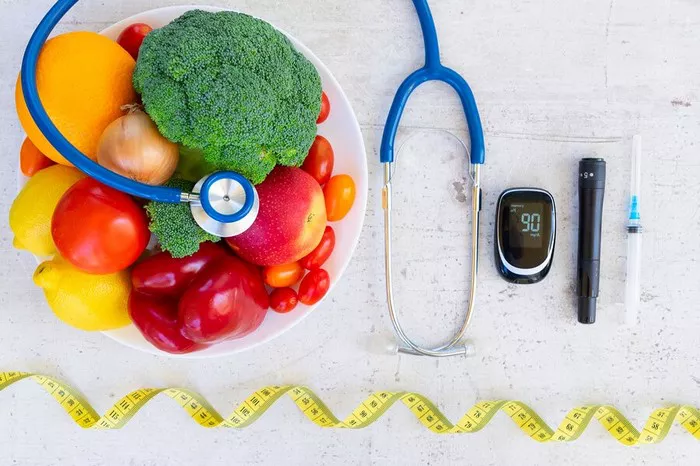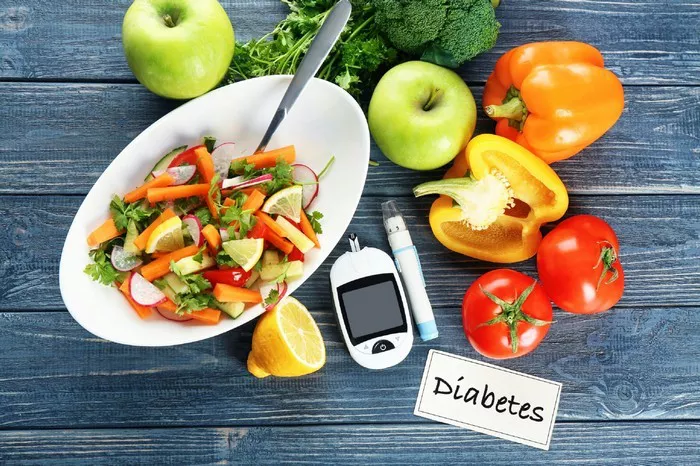Diabetes is one of the most prevalent chronic diseases in the world today, affecting millions of people across various age groups. Type 2 diabetes, in particular, is closely linked to lifestyle factors such as poor diet, physical inactivity, and obesity. While genetics can play a role in the development of the condition, research shows that the foods we consume significantly impact our risk of developing diabetes. By making mindful choices about what we eat, we can reduce our chances of developing diabetes and improve overall health.
In this article, we will explore the types of foods that can help prevent diabetes, their mechanisms of action, and how they contribute to maintaining healthy blood sugar levels. Additionally, we will discuss how specific nutrients, dietary patterns, and lifestyle changes work together to lower the risk of developing this disease.
The Importance of Diet in Diabetes Prevention
Diet plays a critical role in regulating blood sugar levels and influencing insulin sensitivity. Insulin is a hormone produced by the pancreas that helps regulate blood sugar by allowing cells to absorb glucose. In type 2 diabetes, the body either becomes resistant to insulin or does not produce enough of it, leading to high blood sugar levels. Over time, this can result in complications affecting various organs, including the heart, kidneys, and eyes.
A healthy diet can help maintain optimal blood glucose levels by:
-
Improving insulin sensitivity
-
Reducing inflammation
-
Regulating weight
-
Providing essential nutrients for metabolic health
Preventing or delaying the onset of diabetes involves making dietary choices that promote these benefits while avoiding foods that contribute to weight gain, insulin resistance, and blood sugar spikes.
Foods That Help Prevent Diabetes
1. Whole Grains
Whole grains are an excellent source of fiber, vitamins, and minerals that contribute to overall metabolic health. Unlike refined grains (such as white bread or white rice), whole grains retain their bran and germ, providing a rich supply of nutrients and fiber that help regulate blood sugar levels.
Mechanism of Action: The fiber in whole grains slows down the absorption of glucose, helping to prevent rapid spikes in blood sugar after meals. This helps maintain stable glucose levels and reduces the risk of developing insulin resistance over time.
Examples: Brown rice, quinoa, whole wheat, oats, barley, and bulgur.
Research consistently shows that consuming whole grains instead of refined grains is associated with a lower risk of type 2 diabetes. Studies suggest that people who eat more whole grains have better blood sugar control and reduced inflammation, both of which are crucial in preventing diabetes.
2. Leafy Green Vegetables
Leafy green vegetables are rich in vitamins, minerals, and antioxidants while being low in calories and carbohydrates. They are particularly beneficial for preventing diabetes due to their high fiber content and low glycemic index (GI). Foods with a low glycemic index cause slower, steadier increases in blood sugar levels compared to high-GI foods, which lead to rapid spikes.
Mechanism of Action: The fiber in leafy greens helps slow down the digestion and absorption of glucose. Additionally, they are packed with nutrients such as magnesium and potassium, which play a role in insulin function and glucose metabolism.
Examples: Spinach, kale, collard greens, Swiss chard, and arugula.
Several studies have demonstrated that increasing the intake of leafy greens and other non-starchy vegetables can reduce the risk of type 2 diabetes. The antioxidants and anti-inflammatory properties found in these vegetables also support overall metabolic health.
3. Berries
Berries, including strawberries, blueberries, raspberries, and blackberries, are low in sugar, high in fiber, and packed with antioxidants that contribute to good health. They are also rich in polyphenols—plant compounds known to have anti-inflammatory and antioxidant properties.
Mechanism of Action: The polyphenols in berries improve insulin sensitivity and protect against oxidative stress, a key factor in the development of insulin resistance. The high fiber content also helps regulate blood sugar levels and prevents spikes.
Examples: Blueberries, strawberries, raspberries, blackberries, and cranberries.
Consuming berries regularly can help lower the risk of type 2 diabetes by improving blood sugar control and reducing inflammation. Their low glycemic index ensures that they do not cause rapid increases in blood sugar, making them an ideal snack or addition to meals.
4. Nuts and Seeds
Nuts and seeds are excellent sources of healthy fats, fiber, and protein, making them a powerful tool for diabetes prevention. These nutrient-dense foods help regulate blood sugar and provide sustained energy throughout the day.
Mechanism of Action: The high fiber and healthy fat content of nuts and seeds help slow the digestion of carbohydrates, preventing blood sugar spikes. Furthermore, their monounsaturated and polyunsaturated fats improve insulin sensitivity and reduce the risk of metabolic syndrome.
Examples: Almonds, walnuts, flaxseeds, chia seeds, sunflower seeds, and pistachios.
Studies have shown that people who consume nuts and seeds regularly tend to have better blood sugar control and a lower risk of developing type 2 diabetes. In addition to their beneficial effects on blood glucose, nuts and seeds also support heart health and weight management, both of which are important factors in diabetes prevention.
5. Legumes
Legumes, including beans, lentils, and peas, are rich in fiber, protein, and essential nutrients. These foods are known for their ability to stabilize blood sugar levels and provide lasting energy. They are also low in fat and calories, making them an excellent choice for those looking to maintain a healthy weight.
Mechanism of Action: The fiber and protein content in legumes help regulate blood sugar by slowing glucose absorption and promoting feelings of fullness. Their low glycemic index ensures that they do not cause significant blood sugar spikes.
Examples: Chickpeas, lentils, kidney beans, black beans, and navy beans.
Numerous studies have demonstrated that legumes can improve insulin sensitivity and reduce the risk of type 2 diabetes. They are also associated with lower levels of blood pressure and cholesterol, which further supports overall health and reduces diabetes risk.
6. Citrus Fruits
Citrus fruits are packed with vitamin C, fiber, and antioxidants, making them a powerful tool for diabetes prevention. Despite their sweetness, citrus fruits have a low glycemic index and do not cause rapid increases in blood sugar levels.
Mechanism of Action: The high vitamin C content in citrus fruits helps protect against oxidative stress and inflammation, both of which are involved in the development of insulin resistance. The fiber in citrus fruits also helps regulate blood sugar levels by slowing glucose absorption.
Examples: Oranges, grapefruits, lemons, and limes.
Citrus fruits have been shown to improve blood sugar control and reduce the risk of type 2 diabetes. Their low glycemic index, combined with their high antioxidant content, makes them a beneficial addition to a diabetes-prevention diet.
7. Healthy Fats
Not all fats are created equal, and healthy fats—such as those found in olive oil, avocados, and fatty fish—play a crucial role in reducing the risk of diabetes. These fats can improve insulin sensitivity and support overall metabolic health.
Mechanism of Action: Healthy fats, particularly omega-3 fatty acids found in fatty fish, reduce inflammation and improve insulin sensitivity. Monounsaturated fats, such as those found in olive oil and avocados, also promote heart health, which is important for preventing diabetes-related cardiovascular complications.
Examples: Olive oil, avocado, salmon, mackerel, and sardines.
Incorporating healthy fats into the diet can help prevent diabetes by supporting insulin function and reducing inflammation. Studies show that diets rich in healthy fats are associated with improved blood sugar control and a reduced risk of type 2 diabetes.
8. Fermented Foods
Fermented foods, including yogurt, kefir, sauerkraut, kimchi, and other probiotics-rich foods, are increasingly recognized for their role in improving gut health and reducing the risk of diabetes.
Mechanism of Action: Fermented foods support the growth of beneficial bacteria in the gut, which can improve digestion, reduce inflammation, and enhance insulin sensitivity. A healthy gut microbiome has been linked to better glucose metabolism and improved blood sugar control.
Examples: Yogurt (unsweetened), kefir, kimchi, sauerkraut, miso, and kombucha.
Probiotics from fermented foods have been shown to improve insulin sensitivity and reduce inflammation, making them an important part of a diabetes-prevention diet. Consuming fermented foods regularly can enhance gut health, which in turn supports overall metabolic function.
9. Spices and Herbs
Certain herbs and spices are well-known for their anti-inflammatory and antioxidant properties, which can help regulate blood sugar levels. They also provide a flavorful way to enhance meals while supporting metabolic health.
Mechanism of Action: Spices such as cinnamon, turmeric, and ginger have been shown to improve insulin sensitivity and reduce inflammation. Cinnamon, for example, may help lower blood sugar levels by improving insulin function, while turmeric and ginger have powerful anti-inflammatory effects that help protect against insulin resistance.
Examples: Cinnamon, turmeric, ginger, garlic, and chili peppers.
Incorporating these spices into your daily meals can offer numerous benefits for diabetes prevention. Not only do they enhance the flavor of food, but they also provide health-promoting properties that contribute to better blood sugar control and overall well-being.
Conclusion
Preventing diabetes involves adopting a healthy diet rich in whole, nutrient-dense foods that promote stable blood sugar levels, enhance insulin sensitivity, and reduce inflammation. By incorporating the foods discussed above—whole grains, leafy greens, berries, nuts, legumes, citrus fruits, healthy fats, fermented foods, and spices—into your daily routine, you can significantly lower your risk of developing type 2 diabetes.
In addition to a well-balanced diet, regular physical activity, maintaining a healthy weight, and managing stress are essential lifestyle factors that contribute to diabetes prevention. While diet plays a critical role in reducing diabetes risk, it is just one part of a holistic approach to health.
If you are at risk for diabetes, consider making these dietary changes as part of your prevention strategy. Always consult with a healthcare provider or registered dietitian to ensure that you are making the best choices for your specific health needs. With the right food choices and lifestyle habits, you can take proactive steps toward reducing your risk of diabetes and improving your overall health and well-being.
Related topics:

























